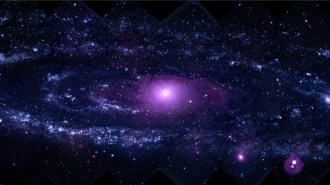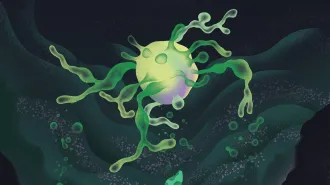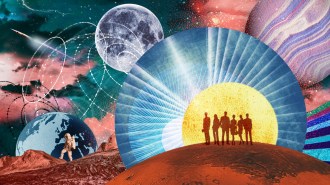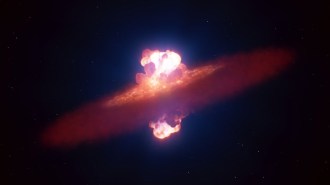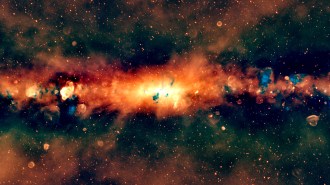Mysterious ‘little red dot’ galaxies have a possible origin story
The tiny galaxies may have been born with little spin, letting gas funnel toward their centers
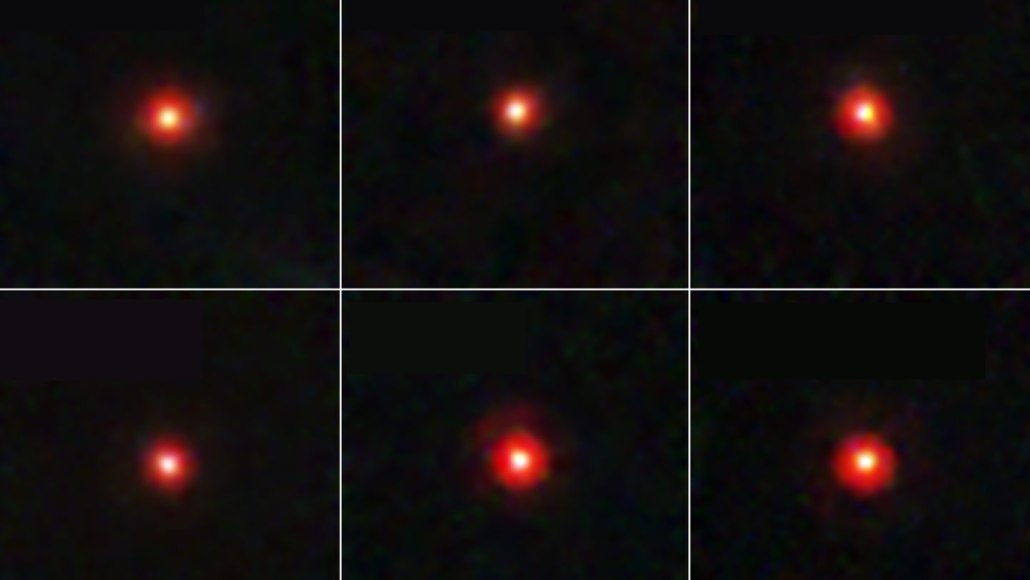
Compact ruddy galaxies (six shown in these images from the James Webb Space Telescope) known as little red dots may have originated in slowly spinning dark matter halos, astronomers say.
Dale Kocevski/Colby College, STScI/NASA, ESA, CSA
The early universe is speckled with little red dots, and now we may have an idea of how these peculiar galaxies originated: They were born with almost no spin.
Little red dots were totally unknown until their discovery by the James Webb Space Telescope, which revealed a tiny galactic species that proliferated when the universe was only 640 million to 1.5 billion years old. These galaxies are compact because they were barely rotating when first taking shape, Harvard astronomers Fabio Pacucci and Avi Loeb report in a paper submitted June 3 to arXiv.org and accepted to the Astrophysical Journal Letters.
Because little red dots existed so long ago, they may be a key link in the story of galaxy evolution. “They are really, really remarkable,” Pacucci says. As their name implies, little red dots are tiny: They emit half their light from a region roughly 1,000 light-years across. That’s only a few percent of the comparable figure for the modern Milky Way.
Their red color may result from dust and gas, which redden light in a galaxy just as Earth’s atmosphere turns a sunset red. The hue may also arise from red giant and supergiant stars. Although the galaxies are intrinsically red, they look even redder to us because their light has traveled toward Earth for more than 12 billion years, during which space expanded, stretching the light waves to even longer, or redder, wavelengths.
Two competing ideas attempt to explain what little red dots are, but both are problematic. The first says that supermassive black holes occupy the centers of the small galaxies and swallow gas. The infalling gas swirls around the black holes so fast that it gets hot and radiates intense light. The problem? Hot gas should also emit X-rays, which no telescope has seen.
The second idea says little red dots consist of billions of stars emitting light. The problem? The stars would have to be jam-packed together to extremes no one has ever seen before. The contrast between our part of the Milky Way and what’s required for little red dots is equivalent to standing in your living room alone — versus sharing it with 1 billion other people.
The new origin story doesn’t say which idea about what the dots are is right. In fact, the two astronomers themselves disagree. “I’m a black hole guy,” Pacucci says, whereas Loeb says, “I have a sense that maybe there is no black hole yet … simply because we haven’t seen X-rays.”
Instead, Pacucci and Loeb try to explain how the little red dots got their start. Galaxies began to take shape early in the universe as dark matter particles attracted one another through gravity, forming clumps known as halos. Over time, these dark matter halos merged, getting larger and attracting gas that fell into them. Some of this gas made stars, thereby creating luminous galaxies.
Dark matter halos spin at various speeds. Little red dots, the astronomers say, arose from halos with the lowest 1 percent of spin speeds. In fast-spinning dark matter halos, centrifugal force keeps stars and gas spread out. In the slowest-spinning halos, though, “the gas needs to shrink farther before the centrifugal force balances gravity,” Loeb says. This is why the little red dots are so small.
The slow spin speeds also explain why little red dots existed when they did. They were probably more common at even earlier times when galaxies were smaller. But those remote little red dots are so dim that no telescope has yet detected them. Later on, they became rare as galaxies in general grew larger.
“I like this paper because it provides a clear benchmark that people can test the observations against” and is a simple model, says astronomer Michael Boylan-Kolchin of the University of Texas at Austin.
One test requires the Webb telescope to take longer exposures. If this origin story is right, the telescope should see lots of little red dots that are so dim and distant they existed less than 640 million years after the universe’s birth.
In addition, “we predict that they should be in special environments that do not exert much torque [or twisting force] on those galaxies,” Loeb says. “For example, you would not expect massive galaxies to be around them” because such galaxies would have spun up neighboring dark matter halos, creating spread-out galaxies rather than mere dots.
Instead, little red dots should cluster in quiet environments, where all dark matter halos spun slowly and no fast-spinning halos disturbed them. Already, the astronomers say, hints exist that little red dots tend to be found near one another. If further work confirms this trend, it could lend cosmic meaning to the phrase “connecting the dots.”

